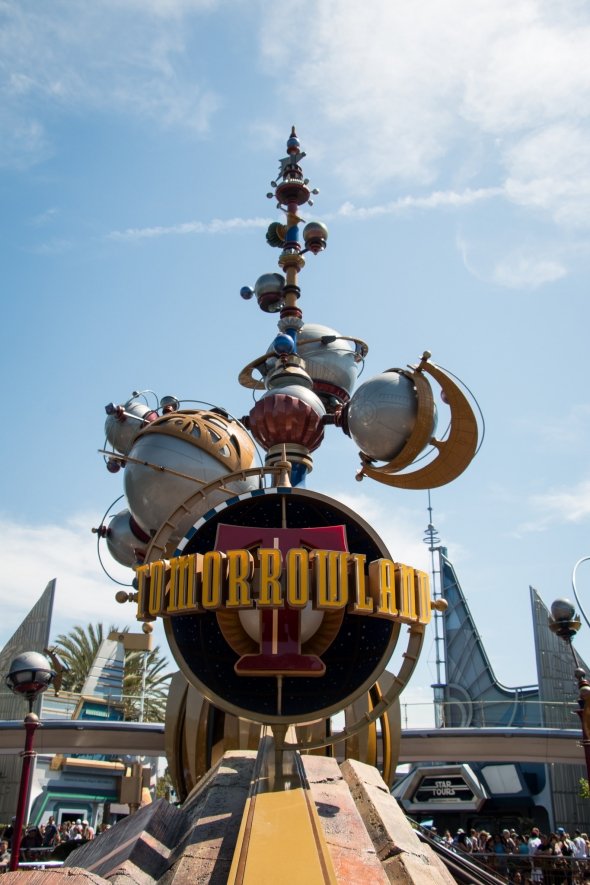Rocket Rods… stalled
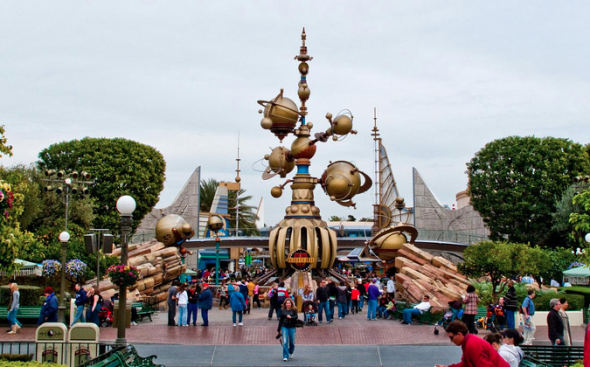
It won’t come as a surprise that the story of the Rocket Rods doesn’t have a happy ending. The ride that forced the removal of Disneyland’s beloved PeopleMover was already an underdog, facing some major hurdles to success… But ultimately, the Rocket Rods and Disneyland’s New Tomorrowland 1998 were doomed from the start.
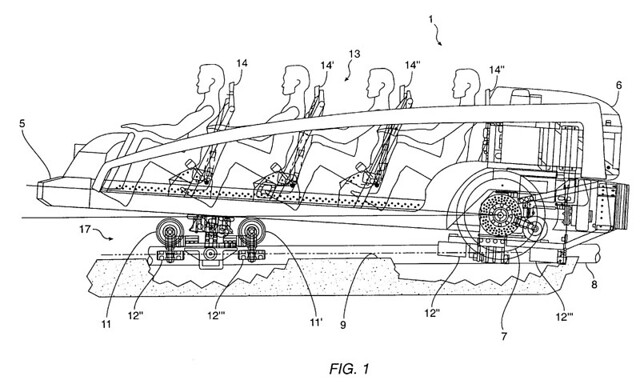
The Rocket Rods opened along with the rest of New Tomorrowland on May 22, 1998. Barely a month later, on July 6 (right as the summer season kicked off!), they were shuttered. In its first months, the ride was plagued by downtime, often operating in its own hours separate from the parks. The problem was in the technology.
Problem 1: Hardware
It won’t surprise you that the Rocket Rods work off of a similar ride system as the Lost Legend: TEST TRACK that was concurrently being developed for Epcot. A retrofit of the basic principles of the “slot car” ride system (albeit, altered to re-use the existing PeopleMover highway), the ride essentially bolted new hardware to the existing tracks, with electricity powering each Rod’s on-board electric motor, as the Passholder-exclusive patent above illustrates.
Of course, Test Track was initially meant to open in 1996 – two years before the Rocket Rods! But by time Disneyland’s New Tomorrowland debuted, Test Track still hadn’t. To give you an idea of how Test Track’s development was going, Disney approached its sponsors – General Motors – to ask if they’d like to sponsor the Rocket Rods, too. When GM was told that the Rocket Rods would use the same technology as the troublesome Test Track, they declined to become involved… Eventually, the Epcot thrill ride opened nearly three years after its planned premiere.
Problem 2: Infrastructure
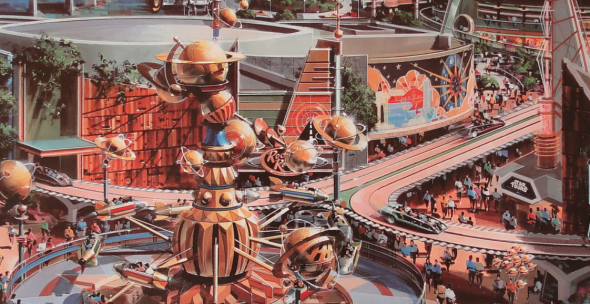
Even once Imagineers had worked out most of the kinks in the ride’s operational hardware, they faced an even tougher challenge. Given the quick and low-cost turnaround needed to adhere to Eisner’s cost-cut New Tomorrowland, designers opted to funnel their funds into the Rocket Rods as a single, anchor attraction for a “new” land. But placing the Rocket Rods on the abandoned PeopleMover track ended up being tougher than it sounded.
While the slow-moving and relaxing PeopleMover had ambled its way along the land’s highways, gently curving along its convoluted layout, the high-speed Rocket Rods would’ve needed major infrastructure changes. To properly maintain a continuous high speed through the course, the tracks of the Rocket Rods would’ve needed to bank on each turn; to be realigned to eliminate shuffling S-curves; to speed smoothly in wide banks and dips like Test Track or Radiator Springs Racers.
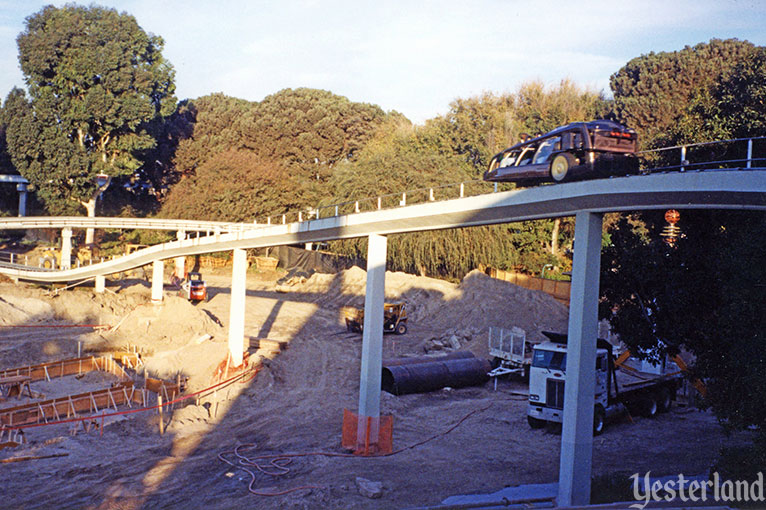
Some insiders even report that the PeopleMover tracks – engineered for the idling and lightweight PeopleMover trains – were physically buckling at the weight of the Rocket Rods and their slot-car style equipment affixed to the paths. According to these sources, the physical infrastructure needed reinforced to handle the weight of the ride and the force exerted by the high speeds and quick decelerations that the PeopleMover’s dainty and decorative support weren’t designed for.
Problem 3: Software

Because they were forced instead to re-use the PeopleMover’s flat tracks, the Rocket Rods needed to slow to a crawl at each turn and twist in the track before accelerating for each straightaway. The odd start-stop, fast-slow pace was one of the ride’s most memorable features… and also its killer. The Rocket Rods famously burned through rubber tires like firewood, requiring continuous new tire changes as cars were pulled from service.
What’s worse, the continuous fluctuations in speed reportedly frazzled the ride’s temperatmental software systems that precisely monitored the spaced the ride’s 22 or 23 Rods. Slowing and accelerating Rods continuous threw off the ride’s block brake monitoring, stalling the ride’s operation and bringing its already abysmal capacity to unacceptable numbers. The “Single Ride Line” was literally invented on the Rocked Rods thanks to their low capacity, unpredictable nature, and 1-1-1-2 seating.
End of the Road
Remember, the Rocket Rods premiered alongside New Tomororwland on May 22, 1998.
The brand new ride lasted barely a month before closing for a refurbishment. That temporary closure was supposed to last for a month. Instead, it lasted three. The Rocket Rods missed the busy summer season that should’ve marked their debut. The ride re-opened in October 1998… with as many problems as before.
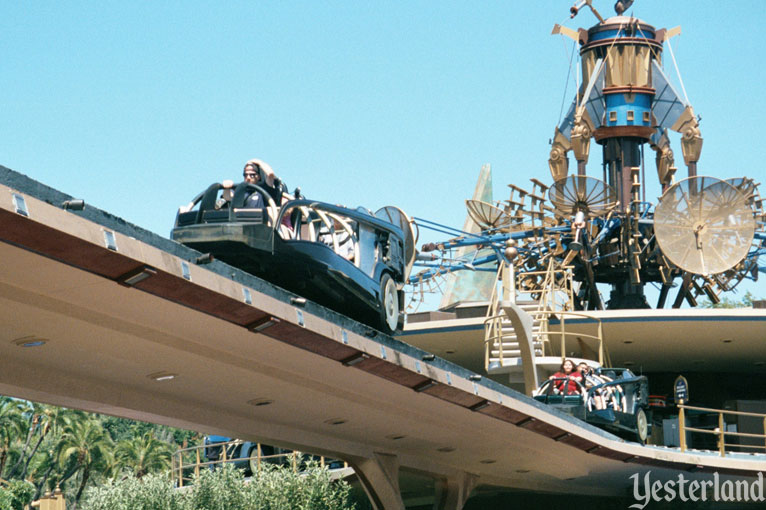
It wasn’t uncommon for the attraction to earn hour-long waits with frustrated guests stuck in the queue as the ride started and stopped, shutting and re-opening with its horrendously low-capacity cars sputtering along the track. The Rocket Rods seemed to be closed more than they were open, and it must’ve become clear to engineers that without serious modifications, the ride was simply not viable.
On September 25, 2000, the Rocket Rods were closed. Signs outside the entrance indicated that an extensive refurbishment (or maybe a full rebuilding) would see the ride shut for at least six months, set to re-open in Spring 2001. Spring came (seeing the opening of another Declassified Disaster: Disney’s California Adventure) and there appeared to be no work completed on any square foot of the Rocket Rods track.
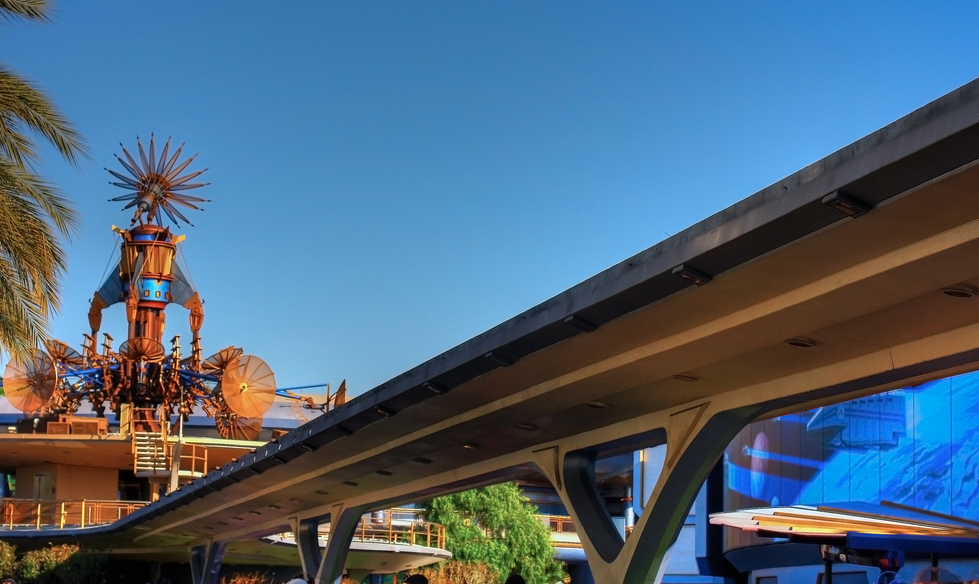
On April 28, 2001 – about the time the ride was due to re-open – Disney spilled the beans and the Orange County Register announced that the Rocket Rods would never re-open. The park’s president at the time, Cynthia Harris, admitted to the New York Times that “the high-speed attraction was never able to perform to its designed show standards.” The Times added, “The problem, she said, was a budget-conscious decision to run the high-speed Rods on the PeopleMover’s unbanked track.”
As quickly as they’d appeared, the Rocket Rods vanished, leaving this bronze New Tomorrowland without its headlining attraction.
The story since…


Slide to compare, 1995 vs. 1998. Images: Disney
Disneyland’s 1998 New Tomorrowland hadn’t exactly been the hit Imagineers and executives must’ve hoped. In case you’re keeping track, the “upgrade” came in the form of the loss of Circle-Vision, the PeopleMover, the Submarine Voyage, Mission to Mars, the Carousel Theater, and the Rocket Jets (all icons of Walt’s era).
In exchange, Disneyland guests got a four-year old 3D film based on a ten-year-old movie; the tired Innoventions, and of course, the Rocket Rods…. while they lasted. Otherwise, this “New” Tomorrowland amounted to lots of brown rocks, and lots and lots of dark, dreary brown and copper paint senselessly layered atop mid-century architecture. Tomorrowland was trapped in a dingy bronze style that made no sense given the land’s Space Age and Star Wars substance.
After Michael Eisner’s unceremonious exit from Disney in 2005 (followed by an exodus of his cost-cutting team), new Disneyland President Matt Ouimet made an intentional effort to undo the budget-slashing of the era preceeding. Pretty quickly, bronze and copper paints were primed over with white, silver, and blue; the former Rocket Rods queue (and Circle-Vision 360 theater) became home to Buzz Lightyear Astro Blasters. Even the Submarine Voyage was reborn by way of Finding Nemo. Naturally, Innoventions is long gone, as is “Honey I Shrunk the Audience” (both spaces are essentially wasted today – a mortal sin in the tiny, landlocked park).
Yes, the West Coast Tomorrowland has become a creative catch-all for Disney, Star Wars, and Pixar characters. Don’t misunderstand – that’s also true in Orlando and Paris. But at last the Floridian and French versions of Tomorrowland manage to look good while doing it. Disneyland’s Tomorrowland, meanwhile, doesn’t have a cohesive style or substance.
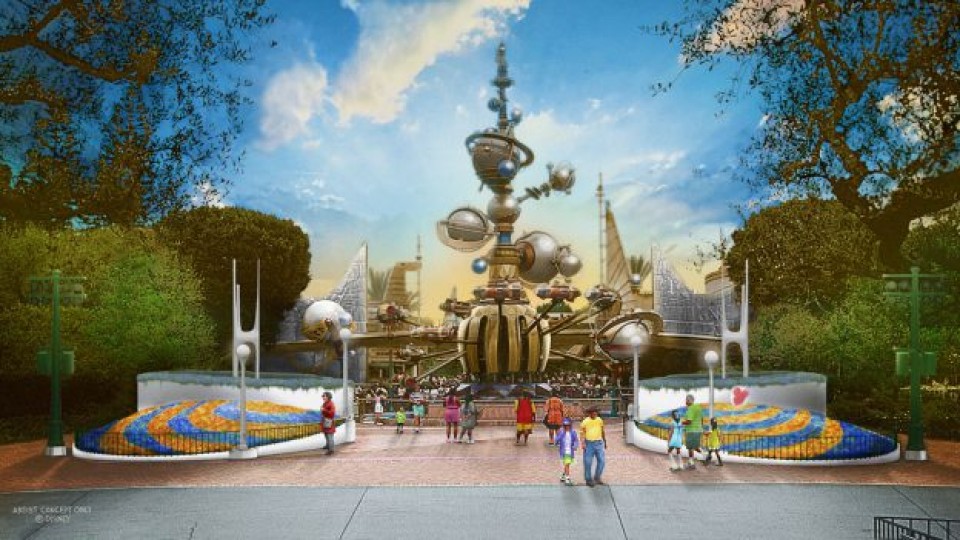
As recently as 2020, Disneyland has continued the land’s move away from 1998 by at last removing the red Discoveryland rockwork and replacing it with white Space Age planters… but it only adds to the confusion given that the da Vinci-esque Astro Orbitor remains grounded at the land’s entry, still mostly gold in anotherwise-silver land.
Yep, unfortunately, it’s time for another floor-to-ceiling complete building of Tomorrowland (ideally sparing only Space Mountain and maybe Star Tours).
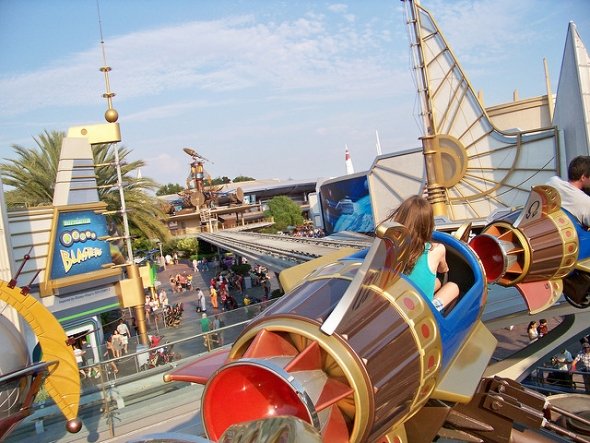
As for what rides along the sleek tracks of the PeopleMover today? Tumbleweeds. Two decades after the Rocket Rods’ closure, the tracks remain. Insiders say that the PeopleMover won’t return, given that if it were built today, accessibility and safety requirements would necessitate wider openings, emergency egress routes, and exit stairs every so-many feet along its course – a multi-million dollar project in the name of nostalgia? Doubtful.
Removing the tracks is also out of the question, though. That’s because, when New Tomorrowland was master-planned in 1967, the PeopleMover physically built into the land’s buildings. Its tracks and supports serve as support and foundations for showbuildings and demolition would be a costly and delicate process. A multi-million dollar project in the name of de-cluttering? Equally doubtful.
Put simply, there’s no reasonable way to bring the PeopleMover back, and no compelling reason to remove the tracks. Either project would likely cost millions.
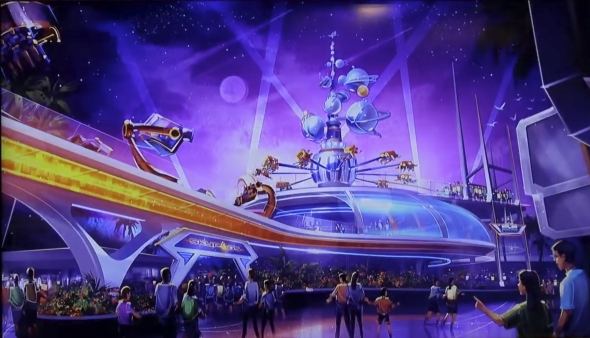
That means that the next time we see movement on the PeopleMover – be it as a new attraction or its crumbling at the wrecking ball – will likely coincide with the next major reimagining of Tomorrowland as a whole, if and when that finally happens. Which isn’t to say Imagineers haven’t dreamed… The image above shows one Imagineer’s interpretation of what could be. But until tomorrow comes, we can at least look back on the interesting story of the Rocket Rods, one of the most disastrous attractions Disney ever dealt with.

Thank you so much for reading. Now, it’s your turn to join the story. If you enjoy spending time falling down the “rabbit hole” of Park Lore’s in-depth, ad-free, member-supported stories, consider becoming a Member for as little as $2 / month.
Members can unlock rare concept art in every tale, reveal attraction audio streams in select stories, gain access to over a hundred exclusive articles in our quick-read Extra Features and in-depth Special Features collections, gain exclusive podcast extras, and receive an annual member card and merch in the mail! (Plus, y’know, supporting research-based, ad-free, clickbait-free, in-depth theme park writing!)
Tell us – did you get a chance to experience the Rocket Rods? How long did you wait? Were they worth it? Given the choice, would you see the PeopleMover return to Disneyland, or give the tracks a proper, well-done thrill ride? What other attractions do you count as “disasters” that you’d like to see chronicled in our growing collection?




